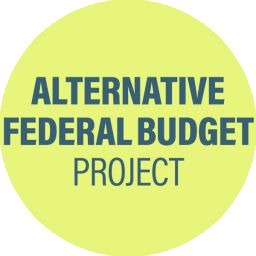Introduction
The need to improve EI benefits and broaden access remains urgent. This is true for both the ‘good times’ when unemployment is low but individuals are hurting, and times of widespread economic shocks—the kind that will come with the next climate crisis, the next pandemic and the next recession.
Even now, environmental and digital transitions are highlighting workers’ unmet needs for income supports, labour adjustment, and continuous learning. The EI program must be pivotal in helping workers meet these challenges.
While Budget 2023 included EI-related announcements, they were not the far-reaching and comprehensive reforms that many Canadians were awaiting.1
Advocates anticipated that, at minimum, the government would extend the well-received temporary EI measures in effect during 2020- 22 as a bridge until permanent reforms could be introduced. Instead, the 2023 improvements were limited to re-confirming the EI Sickness Benefit extension to 26 weeks, improving an earlier draft of the new EI Board of Appeals, extending EI support for seasonal workers until October 2024, encouraging take-up of EI Work Sharing, and a commitment to strengthen provisions that discourage employee misclassifications.
Employment Insurance is one of our most important safety net programs, funded through premiums paid by both employers and workers. It is also one of the largest Canada-wide programs, with forecasted expenditures of $27.5 billion in 2024-25.2
Even prior to the pandemic, in 2019-20, more than two million workers relied on EI benefits after layoffs, parental leaves, sick leaves and other covered separations from their jobs.3
Overview
In recent decades, successive governments have fallen into the bad habit of improvising when there are surges in unemployment due to economic downturns or other shocks. Typically, those governments have temporarily injected public funds—the only option for stabilizing employer and worker premiums when the rules would otherwise dictate premiums rapidly increase.
It is time to move beyond ad hoc, stop-gap measures. For more than three decades, only employers and workers have been contributing to the EI Account. The government must now pay its fair share and do so in a considered and predictable way, as befits a tripartite social insurance system. This will provide business and labour with more predictability in premiums. It will also allow us to begin the work of building a more robust employment insurance system, expanding access and improving benefits.
The AFB will implement a new annual government contribution of 20 per cent to EI program costs. These costs include EI Part I benefits (Regular, Special, Work Sharing, Fishing and an enhanced EI Training Support Benefit), EI Part II Labour Market Agreement transfers to provinces and territories, and administrative costs.
Employers and employees will continue to share the remaining program costs through premium contributions on a 1.4 to 1 basis. An adjusted rate will apply to self-employed workers for coverage under a new ‘Special Benefits Plus’ package, including an enhanced Training Support Benefit.
The new 20 per cent contribution from government will support the AFB actions that follow.
Actions
In 2024, the AFB will proceed with the promised reform of Employment Insurance:4
- Expanding access.
- Improving benefits.
The AFB will establish a common qualifying rule of the lesser of 360 hours or 12 weeks in all regions. This will apply to both regular and special EI benefits. The minimum benefit period will be 14 weeks. EI qualifying hours are based on a 35 hour week whereas the average for payroll employees is only 30.9 hours.5 It’s even lower for service occupations, affecting large numbers of women and racialized workers.
The AFB will extend the EI benefit period to up to 50 weeks in all regions. The additional five weeks for eligible seasonal claimants will be retained. In 2019-20, prior to the 50 week maximum during Covid, about 1/3 (32.8%) of claimants exhausted EI Regular Benefits before finding work.6
The AFB will replace the current rule that requires an EI disqualification when an employer reports an ‘invalid’ job separation. This means a total loss of income for those leaving work to attend training or school. This is also true for workers, especially vulnerable, low paid workers, who may be leaving exploitative conditions, harassment or even wrongfully dismissed. It will instead substitute a disentitlement period of three weeks. There is historical precedent in Canada for limiting the sanction to a short disentitlement period. This is also the practice today in other countries.7
The AFB will adjust the current qualifying rule which requires a work separation of seven days without pay and without work. This rule has a negative impact on EI access for workers with precarious schedules, especially women and racialized workers. It creates absurdities such as temporarily laid-off employees being denied benefits because they held onto an employer-issued cellphone.
The AFB will eliminate the 50-week limit on combined special benefits and regular benefits, extending the reference and benefit period to 104 weeks. The 50-week limit means workers who face a layoff before or after a parental or caregiving leave, women in particular, may be denied EI benefits. Not only has the Social Security Tribunal found this limitation to be in breach of the equality provisions of the Charter of Rights and Freedoms,8 this measure is necessary if Canada’s EI system is to meet its broad economic and social objectives, including income maintenance during temporary separations from work be they parental leaves or layoffs. We have seen the sorry consequences in countries like the US where this is not done.
The AFB will extend EI coverage to workers employed through the Temporary Foreign Worker Program, including the Seasonal Agricultural Worker stream, beginning with the immediate and full restoration of special benefit coverage.
The AFB will require a presumption of ‘employee’ status, with mandatory coverage for EI. The ABC test will be adopted to determine if a worker is genuinely an independent contractor.9,10 Grappling with the widespread misclassification of workers is the first order of business, even as we consider the best ways of providing income maintenance for those who are genuinely self-employed, especially those who most closely resemble payroll employees as well as gig workers engaged with large platform companies. To begin with, self-employed workers will have coverage under a new ‘Special Benefits Plus’ package, including an enhanced Training Support Benefit.
The AFB will adopt a standard EI benefit rate of 66.6 per cent. At one time Canada’s UI system replaced two thirds of a claimant’s normal earnings; the need for a reasonable rate is no less today. Indeed, the current 55 per cent rate is a historical low. With inflation it is increasingly difficult to survive on barely half your former income.
The AFB will implement an individual EI benefit floor of $450 weekly. During the pandemic, the temporary EI minimum rate proved of enormous benefit to some of the lowest paid and most precariously employed workers. With this, we make EI more relevant to the working poor—many of whom are women, racialized, Indigenous, and adults with disabilities. This ensures those workers stay out of deep poverty and are not forced into cheap labour jobs just to survive.
The AFB will increase 2024 EI Maximum Insurable Earnings (MIE) to $91,000, mirroring Quebec’s 2023 MIE for the QPIP parental benefit program.11 This will provide additional EI Account net revenues. The MIE increase will also trigger a 2024 Maximum Benefit Rate of $963. Workers with average and above-average earnings over the current $61,500 MIE receive less than 55 per cent of their previous earnings when they become unemployed or require special benefits. The 2023 EI Actuarial Report forecasted almost half of all claimants (47.2 per cent) would have earnings above the MIE in 2023.12 Many have indicated a willingness to pay more into EI if more of their earnings are covered as insurable employment if they become unemployed or require special benefits.
The AFB will adjust ‘Working While on Claim’ rules to allow workers to keep the first $100 before triggering an EI benefit clawback. Current requirements discourage workers from taking temporary employment and disadvantage those working multiple part time jobs, especially lower paid workers and women.
The AFB will allow workers to start receiving EI benefits sooner by discontinuing the allocation of separation payments such as severance and vacation pay. This was one of the improvements in benefit calculations used during the pandemic which also simplified the processing by Service Canada.
Other AFB measures related to the redesign of the EI Training Benefit are covered in the ‘Decent Work’ chapter. This is in addition to EI-funded Labour Market Agreement transfers to the provinces and territories for both training and employment supports.







